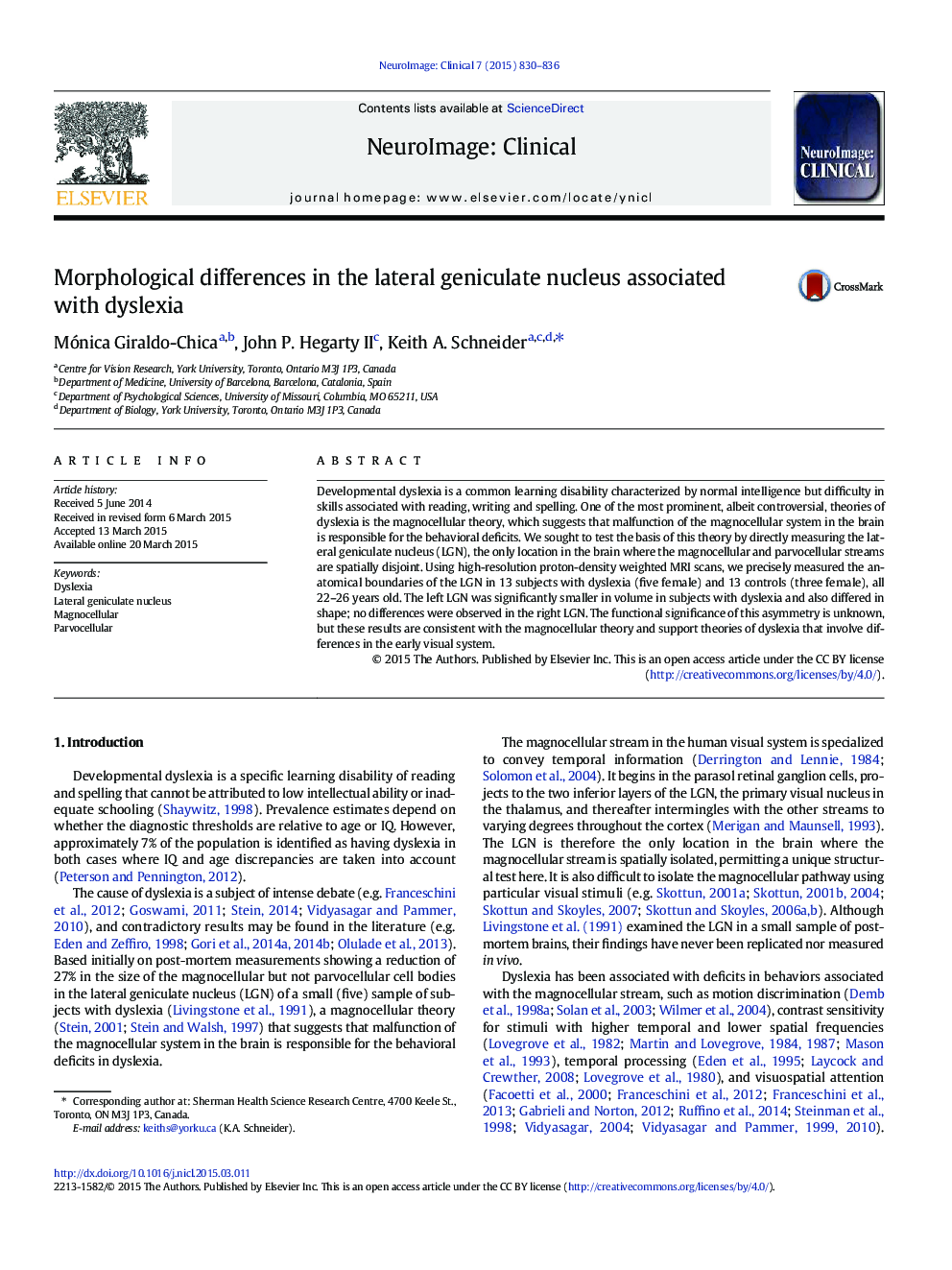| Article ID | Journal | Published Year | Pages | File Type |
|---|---|---|---|---|
| 3075139 | NeuroImage: Clinical | 2015 | 7 Pages |
•The first direct test of the magnocellular hypothesis of dyslexia in vivo•The first measurements of the LGN in living subjects with dyslexia•The LGN are smaller in subjects with dyslexia and differ morphologically
Developmental dyslexia is a common learning disability characterized by normal intelligence but difficulty in skills associated with reading, writing and spelling. One of the most prominent, albeit controversial, theories of dyslexia is the magnocellular theory, which suggests that malfunction of the magnocellular system in the brain is responsible for the behavioral deficits. We sought to test the basis of this theory by directly measuring the lateral geniculate nucleus (LGN), the only location in the brain where the magnocellular and parvocellular streams are spatially disjoint. Using high-resolution proton-density weighted MRI scans, we precisely measured the anatomical boundaries of the LGN in 13 subjects with dyslexia (five female) and 13 controls (three female), all 22–26 years old. The left LGN was significantly smaller in volume in subjects with dyslexia and also differed in shape; no differences were observed in the right LGN. The functional significance of this asymmetry is unknown, but these results are consistent with the magnocellular theory and support theories of dyslexia that involve differences in the early visual system.
Graphical abstractFigure optionsDownload full-size imageDownload as PowerPoint slide
